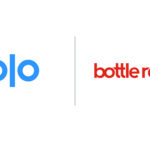Published by
By Terri Casterton, director of product and strategy and healthcare, Bottle Rocket.
If digital expansion in healthcare was simmering before the pandemic, COVID-19 has set the need for transformation alight. Engagement tactics that were already in use before 2020, like telehealth, remote patient monitoring, and care at home, flew to the forefront of the agenda as providers were forced to close their doors.
COVID-19 revealed a complicated flaw in the industry: a maze of digital obstacles preventing a seamless online patient experience. Post-pandemic, patient habits still lean towards a preference for digital access: in July 2021, a McKinsey report revealed that telehealth utilization in the US has stabilized at levels 38 times higher than before COVID-19.
As everyday healthcare decisions fall upon the shoulders of increasingly digitally-adept populations, providers need to ensure a simple user experience -moving away from patient portals to more robust engagement platforms. At the forefront of every leader’s mind should be how to provide a frictionless engagement path for patients, and what digital tools are necessary to guarantee the seamless delivery of this experience.
Electronic health record (EHR) patient portals have long been an entry-point for basic transactions like viewing test results and refilling medications, but this is no longer enough. Innovators in the healthcare space are recognizing the need to move to more dynamic systems. Luckily, EHR vendors have, of late, been more willing to partner with third-party app and cloud-based developers, building integrated solutions to provide a more cohesive healthcare experience.
It’s clear that unleashing a patient-focused strategy is the way forward for healthcare providers in the wake of the pandemic. But what are the key benefits that will differentiate your company from the competition?
Get hyper-personal in the experience you deliver
EHRs can serve an enterprise, from labs to ICUs, across multiple facilities and geographies. In a world of shrinking healthcare margins, this scale can drive much-needed standardization and efficiencies. But the needs and circumstances of a real population are never contained or linear, effectively diminishing the potential of a one-size-fits-all approach.
Value continues to shift from fee-for-service to fee-for-outcome, and because of this a hyper-focus on specific segments will uncover new opportunities to drive engagement (and corresponding outcomes) on a highly specialized care journey.
Up your game through intelligent analytics
Indeed, EHR patient portal analytics build an accurate image of how many patients are logging in, and what activities they are completing once logged in. But a richer data set is necessary to graduate from understanding function to deriving actionable insight.
Third-party and custom-developed analytics can reveal unmet needs, in turn driving particular feature development and business tactics. A higher level of insight derived from smarter analytics empowers health systems to understand coverage gaps in markets, and informs changes to the user-experience to guide patients to the services they need.
Progress at your strategy’s pace, not that of vendor releases
Cloud-based solutions from third-party vendors are often more agile with updates than EHR implementations. These tend to rely on semi-annual updates to get the latest features deployed on client-specific hardware (and that’s after working through a backlog of other requests).
In addition, with more flexibility on feature releases, healthcare systems can more easily experiment with engagement approaches, wasting less time and spending more innovating.
The simpler, the better
As more healthcare systems explore third-party solutions, the need to create a cohesive user experience becomes even more essential. Disjointed or clunky workflows, where patients log into multiple systems and receive redundant, conflicting communication are a recipe for miserable patient engagement. An integrated, protected platform that informs a patient’s decisions on health learning and buying decisions works for everyone.
This kind of transformation is the key to keeping up with a fast-evolving industry, so time is of the essence. What are you waiting for?
This article was originally published on ElectronicHealthReporter.com




